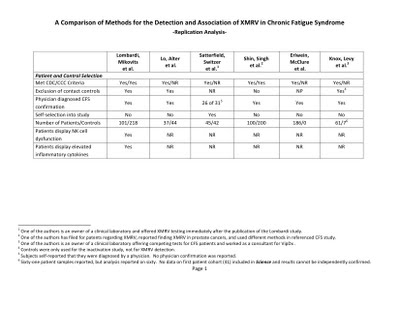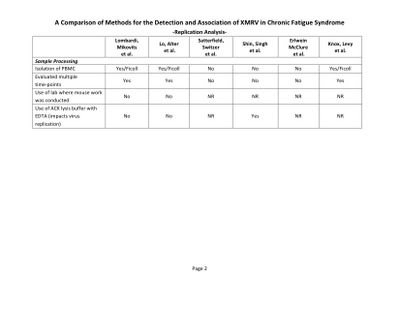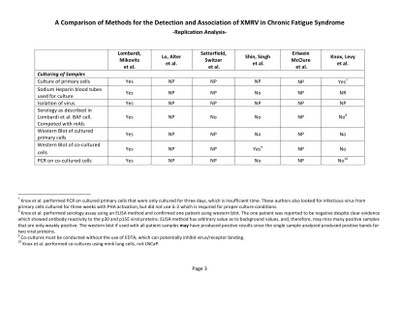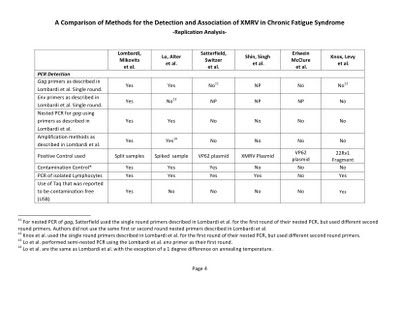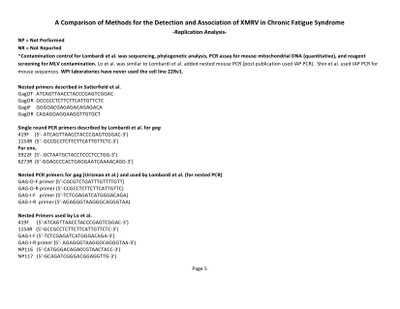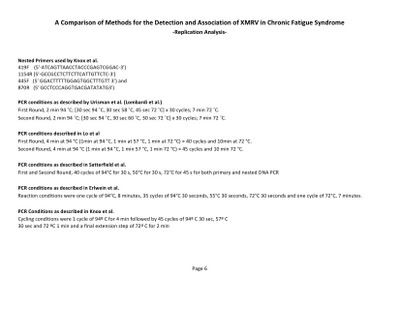For easier reading and sharing XMRV Global Action has compiled the XMRV related abstracts from the 15th International Conference on Human Retroviruses: HTLV and Related Viruses, Leuven and Gembloux, Belgium. 5-8 June 2011
1. XMRV replicates preferentially in mucosal sites in vivo: Relevance to XMRV transmission?
http://www.retrovirology.com/content/8/S1/A219
Francois Villinger1,2*, Jaydip Das Gupta3, Nattawat Onlamoon4, Ross Molinaro1,2, Suganthi Suppiah1,2, Prachi Sharma5, Kenneth Rogers5, Christina Gaughan3, Eric Klein3, Xiaoxing Qiu6, Gerald Schochetman6, John Hackett Jr6, Robert H Silverman3
“In fact, a single atraumatic mucosal exposure with a high dose of XMRV virus into the urethra resulted in infection of 1 out of 4 macaques providing proof of concept that such transmission is possible. However, additional work is needed to fully investigate potential modes of XMRV infection.”
2. Development of XMRV producing B Cell lines from lymphomas from patients with Chronic Fatigue Syndrome
http://www.retrovirology.com/content/8/S1/A230
Francis Ruscetti1*, Vincent C Lombardi2, Michael Snyderman3, Dan Bertolette4, Kathryn S Jones1, Judy A Mikovits1
“Therefore XMRV infection may accelerate the development of B cell malignancies by either indirect chronic stimulation of the immune system and/or by direct infection of the B-cell lineage . Since viral load in peripheral blood is low, these data suggest that B cells in tissues such as spleen and lymph nodes could be an in vivo reservoir for XMRV.”
3. Prevalence of XMRV in blood donors, HTLV and HIV cohorts
http://www.retrovirology.com/content/8/S1/A222
Xiaoxing Qiu1*, Priscilla Swanson1, Ning Tang2, Gregor W Leckie2, Sushil Devare1, Gerald Schochetman1, John Hackett Jr1
“XMRV seroprevalence ranged from 0 – 0.6% in US blood donors, HIV-1 infected and HTLV uninfected subjects. Notably, 4.1% of Japanese HTLV-I infected individuals were p15E reactive. Inspection of sequence homology between HTLV and XMRV revealed a high level of conservation within the immunodominant region of HTLV gp21 suggesting increased seroreactivity is due to cross-reactive antibodies.”
4. Multi-laboratory evaluations of XMRV nucleic acid detection assays
http://www.retrovirology.com/content/8/S1/A231
Graham Simmons1,2*, John M Coffin3,4, Indira K Hewlett5, Shyh-Ching Lo6, Judy A Mikovits7,8, William M Switzer9, Jeffrey M Linnen10, Francis Ruscetti11, Simone A Glynn12, Michael P Busch1,2
“The Blood XMRV Scientific Research Working Group was formed to facilitate collaborative studies into the impact of XMRV in blood donors. Studies will evaluate XMRV detection assays in terms of sensitivity, specificity and reproducibility; assess performance on specimens represented in existing blood donor repositories, and determine the prevalence of XMRV in donors.” Phase III results expected soon. Phase IV will test a blinded panel of 300 blood donor samples.
5. Immune correlates of XMRV infection
http://www.retrovirology.com/content/8/S1/A221
Vincent Lombardi1, Deborah Goetz2, Max Pfost1, Cassandra Puccinelli1, Judy Mikovits1*
“XMRV infection results in dysregulation of the immune response, either directly by infection of specific leukocyte subsets or indirectly through cytokine modulation.”
6. The effects of XMRV gene expression on the mouse prostate
http://www.retrovirology.com/content/8/S1/A223
Daniel Rauch, Sirosh Bokhari, John Harding, Lee Ratner*
“Breeding PRO-XMRV mice with PRO-XPR1 mice will allow us to test whether XMRV integration or gene expression can cause more advanced prostate pathology in vivo. With these XMRV mouse models we seek to address the question that remains unanswered to date as to whether XMRV is capable of causing prostate dysplasia or cancer in vivo.”
7. XMRV: usage of receptors and potential co-receptors
http://www.retrovirology.com/content/8/S1/A224
Mohan K H G Setty*, Krishnakumar Devadas, Ragupathy Viswanath, Veeraswamy Ravichandran, Shixing Tang, Owen Wood, Durga S Gaddam, Sherwin Lee, Indira K Hewlett
“XMRV replication was observed in GHOST cells that express CD4, and each of the chemokine receptors ranging from CCR1- CCR8 and Bob suggesting that infectivity in hematopoietic cells could be mediated by use of these receptors. Infection of Lung epithelial cell A549 lacking XPR1 expression clearly indicates usage of other receptors by XMRV for entry into susceptible cells.”
8. Cell line tropism and replication of XMRV
http://www.retrovirology.com/content/8/S1/A225
Krishnakumar Devadas, Mohan K H G Setty, Ragupathy Viswanath, Durga S Gaddam, Owen Wood, Shixing Tang, Jiangqin Zhao, Xue Wang, Veeraswamy Ravichandran, Sherwin Lee, Indira K Hewlett*
“Replication of XMRV could be observed in cervical and lung epithelial cells, T-cell lines Jurkat and H9, B-cell line HL60, U937 cells and in primary PBMC and monocyte-derived macrophages. The levels of XMRV transcripts were lower in primary monocytes compared to T-cell lines suggesting less efficient replication in these cells.”
9. Structure of the xenotropic murine leukaemia virus-related virus matrix protein
http://www.retrovirology.com/content/8/S1/A227
Michal Doležal1,2, Iva Pichová1, Tomáš Ruml2, Richard Hrabal3, Michaela Rumlová1*
“Although the protein sequence of the XMRV-MA is very similar to that of the murine leukaemia virus matrix protein (MLV-MA), it varies in several amino acid residues. We compared the structures of the XMRV-MA and MLV-MA and found that those changes are localized in a few domains, mostly on the surface of the protein.”
10. Serologic and PCR testing of persons with chronic fatigue syndrome in the United States shows no association with xenotropic or polytropic murine leukemia virus related virus.
http://www.retrovirology.com/content/8/S1/A232
William M Switzer1*, Hongwei Jia1, HaoQiang Zheng1, Shaohua Tang1, Rebecca A Garcia2, Brent C Satterfield2
“Our findings are consistent with previous negative reports and do not support an association of XMRV or MuLV in the majority of CFS cases across the US.”
11. Detection of MLV-like gag sequences in blood samples from a New York state CFS cohort
http://www.retrovirology.com/content/8/S1/A234
Maureen R Hanson1 , Li L Lee1, Lin Lin1, David E Bell2, David Ruppert3 and David S Bell4
“gag sequences could be amplified from genomic DNA from LNCaP cells of some subjects after 4 or 6 subcultures following incubation with certain subjects’ plasma, indicating the presence of infectious virus in blood. All gag sequences detected in this cohort were more similar to the MLV-like sequences reported by Lo et al. (2010) than to the XMRV sequences reported by Lombardi et al. (2009). Detection of gag sequences in whole blood genomic DNAs that were negative for mouse IAP and mitochondrial DNA provides strong evidence for infection of humans with MLV-like viruses.”
12. Murine leukemia viruses (MuLV) and Xenotropic MuLV-related viruses exhibit inter-tropic complex recombination patterns
http://www.retrovirology.com/content/8/S1/A235
Mattia CF Prosperi , William M Switzer, Walid Heneine and Marco Salemi
“Given the evidence of inter-tropic recombination in MuLV, detection and classification of recombination in XMRV using different MuLV tropism prototypes should be interpreted with caution. Despite using a small dataset, a strong phylogenetic signal in the alignments and highly resolved phylogenies inferred both by full-length and sliding-window approaches, different recombination programs reported conflicting results. These results suggest that identification of parental strains of the potential recombinants is difficult and that recombination in the highly genetically related MuLV have been occurring for some time.”
13. In vitro assembly of xenotropic murine leukemia virus-related virus CA-NC protein
http://www.retrovirology.com/content/8/S1/A236
Romana Hadravová, Jitka ¿tokrová, Michal Dole¿al, Iva Pichová, Tomá¿ Ruml and Michaela Rumlová
“We found that purified XMRV full-length CANC, starting with the conserved proline residue at the N-terminus of CA, was not able to assemble into particles. However, a modification of the N-terminus of CANC (modCANC) enabled formation of spherical particles. Moreover, the negative staining of the in vitro assembled particles of XMRV modCANC revealed different organization of protein layers in comparison to CA-NC of M-PMV.”
14. Human infection or lab artifact: will the real XMRV please stand up?
http://www.retrovirology.com/content/8/S1/A241
Robert H Silverman
“Xenotropic murine leukemia virus-related virus (XMRV) was first identified in 2005 in a study of human prostate cancer patients with genetic variants of the antiviral enzyme, RNase L. Subsequent investigations in North America, Europe and Asia have either observed or failed to detect XMRV in patients [prostate cancer, chronic fatigue syndrome-myalgic encephalomyelitis (CFS-ME), immunosuppressed with respiratory tract infections] or normal, healthy control individuals. Among the confounding factors are the potential for lab contamination with similar or identical viruses or viral sequences originating in mice. In some studies, relatively contamination-resistant methods (e.g. IHC, FISH, and antibody detection) suggest that either XMRV or a similar type of virus is present in some patients. Evidence for and against genuine infections of humans with this intriguing virus (and/or related viruses) will be discussed.”
15. XMRV infection in human diseases
http://www.retrovirology.com/content/8/S1/A238
Otto Erlwein email, Mark J Robinson, Steve Kaye, Myra O McClure, Marjorie M Walker, Anup Patel, Wun-Jae Kim, Mongkol Uiprasertkul, Ganesh Gopalakrishnan, Takahiro Kimura and Kikkeri Naresh
“The novel gammaretrovirus xenotropic murine leukemia virus-related virus (XMRV) was identified in human prostate cancer tissue in 2006, confirmed in 2009 and later linked to a second human condition chronic fatigue syndrome, CFS. These investigations, all carried out in the US, have not been reproduced in Europe or in China.
We found no evidence for XMRV infection in CFS. Moreover, we failed to find evidence of XMRV infection in UK prostate cancer patients and in prostate cancer tissue taken from patients in India, Korea, Thailand and Japan, or in cancers other than that of the prostate.
Our UK CFS patients were consistently XMRV-free. We did, however, generate false-positive results from prostate cancer patient tissue, despite the fact that the no-template controls in our PCR were consistently negative and the PCR for murine mitochondrial DNA was often also negative.
Sources of this contamination will be discussed in our presentation.”

